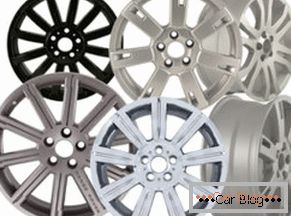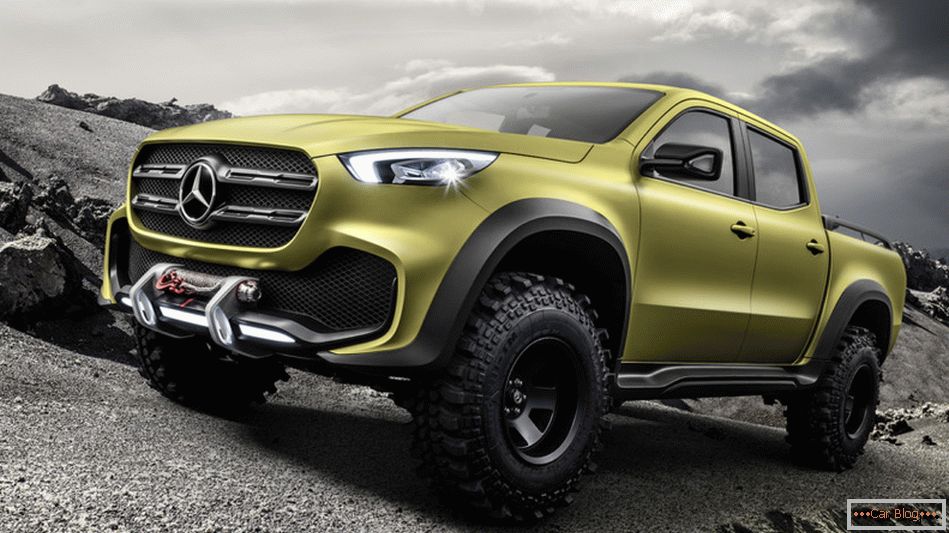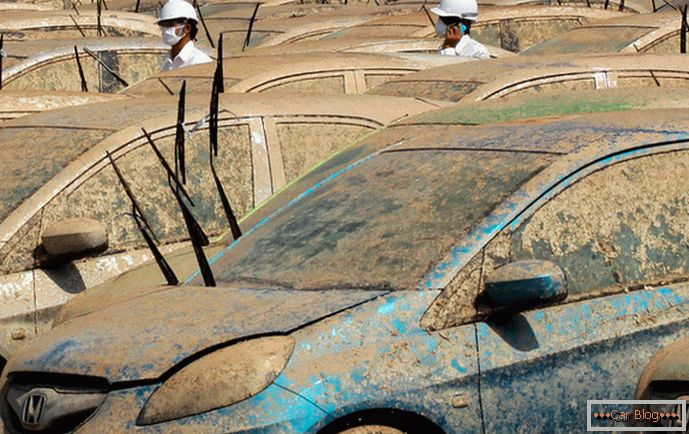>
Most of the drivers during their experience of travel came in a situation when the misted glass brought serious discomfort. Particularly unpleasant is that it manifests itself in rain, snow or fog - when road conditions are the most dangerous. In some cases, condensation on the windshield may cause an accident.
Fogging of glasses is caused by the fact that due to the discrepancy between the temperature inside the car and the outside, the air in the air turns from a gaseous (vapor) into a liquid state - drops on the surface. In other words, condensate is settled microscopic droplets of moisture.
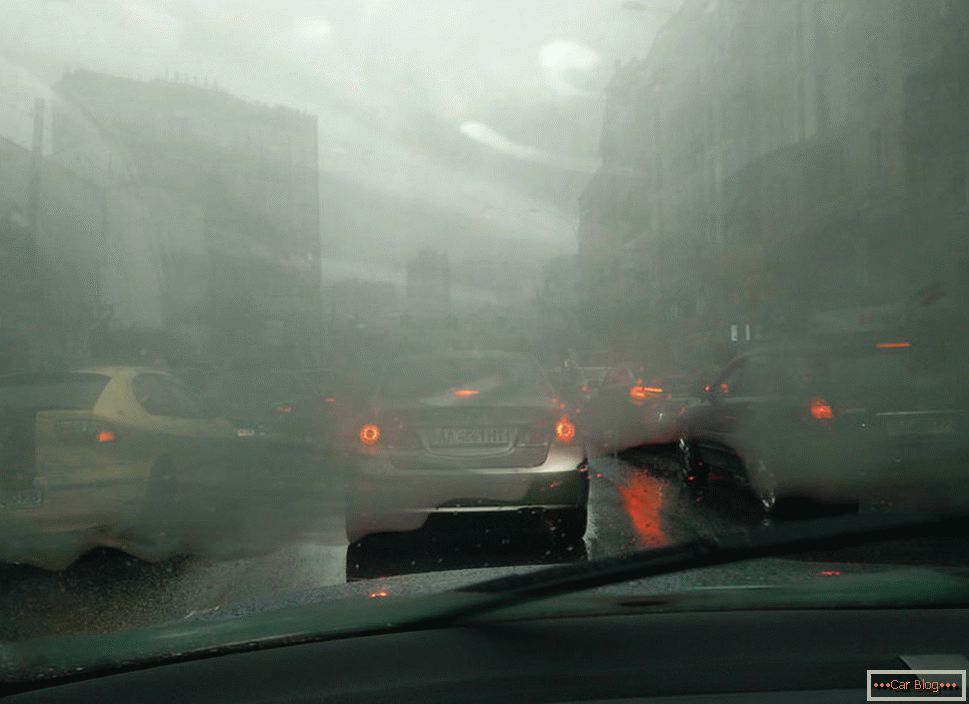
The stained glass представляет серьезную угрозу для безопасности
Читать далее о том как бороться с запотеванием стекол-->Запотевание происходит в непогоду по той причине, что в туман, снег и дождь температура значительно ниже, чем в салоне автомобиля. Чаще всего это происходит в межсезонье, когда влажность воздуха и без того высока.
How to get rid of condensation on the glass
Some motorists to get rid of moisture on the glass follow the plain advice - slightly open the window and add the power of the heater. Most car companies took care of the comfort of people behind the wheel and created a special button on the air conditioner (in those cars where it is) that allows you to switch on the “anti-fogging mode” in one motion - the air conditioner that intensively blows the interior, including glass, is activated. It is necessary in order to lower the level of humidity and bring the glass temperature to atmospheric. Of course, this does not give a full result, still not allowing to properly assess the situation on the road through the misted glass.
It is also not recommended to wipe the windshield with rags, even if the car has a means to clean the glass - it has a different purpose. Drivers who try to wipe moisture while driving, seriously risk distracting or make an extra move, which will be especially critical in bad weather conditions.
Glass defogger
One of the most simple and affordable, but effective ways to rid the glass of moisture is the use of chemicals. A special composition that is applied to the auto glass and allows you to take care of possible fogging. Despite the fact that the “complete prevention of condensate” declared by many manufacturers is only a trick, the operation of the tool is enough to provide a complete overview during bad weather. It is not able to completely get rid of moisture, but it helps enough to repel a large part. This property also depends on the quality and manufacturer.
How does the glass defogger
The active substance is alcohol. The principle of operation lies in the fact that the glass treated with the solution repels water particles or causes them to gather in large drops, which is almost not a hindrance. In general, the defogger eliminates fog on the autoglass - this is its main task.
If you delve into the principle of action, then its properties defogger must low adhesion, which provides alcohol, being applied to the glass. On its surface remains a kind of film, which has long been struggling with the formation of condensate. The tool breaks the surface tension of water, which is formed from humid air, preventing it from settling on the glass - it is forced to be distributed evenly. Under the influence of the anti-fog, the sun's rays are not refracted, which means that the perception is not distorted.
There are anti-condensation agents in which the active substance is a water repellent composition. When it hits the water instantly rolls down under the action of gravity.
How to use the glass defogger
Choose a specific tool should be depending on the requirements and preferences. The general condition for them is one thing - preparation before applying. Glass not only needs to be cleaned of dirt, but also to take care that there are no cracks on the surface. In addition, work on glass treated with polishes and other fat-containing agents is not allowed. The application should take place in a ventilated room with a temperature of –5 to +25 ° С.
The use of a car defroster is as follows:
- Shake container before applying.
- Depending on the package, the solution is sprayed onto the glass or with a napkin.
- The processed glass should remain at rest for about half an hour - during this time it should not be touched and cleaned, as well as subjected to "combat" conditions.
- After the final drying means on the surface are also unacceptable touch. For the rest, it is completely ready for operation.
Skin areas, as well as eyes and mucous membranes, must be covered before applying an anti-fog agent. A situation in which the glass is still fogging may have two reasons:
- The surface was cleaned or exposed after application — it was touched or rubbed;
- The tool turned out to be of poor quality.
Testing antifogging for a car
For the study were selected six tools that are most often found in car shops in Russia. Here they are:
- Sintec;
- Tweak;
- Eltrans is, as well as two previous means, the Russian production;
- Abro - USA;
- Sonax - Germany;
- CarPlan - England.
The course of testing was as follows: the windshield of the car was conditionally divided into six parts. Each of them corresponded to one of the means of the participants. All glass was cleaned from dust and dirt, and also had no cracks, chips and holes. The appearance of condensate was triggered by air conditioning - a mode was used that reduced the glass temperature, making it below the dew point.
The main objective criterion was the coefficient of illumination. This allows you to determine what percentage of the light passes processed by some means, which turned out to be in conditions that provoke fogging. The flashlight was the light source, which provided a narrow beam. For measurements, a luxmeter was used - a device that reads the degree of illumination using its photocell.
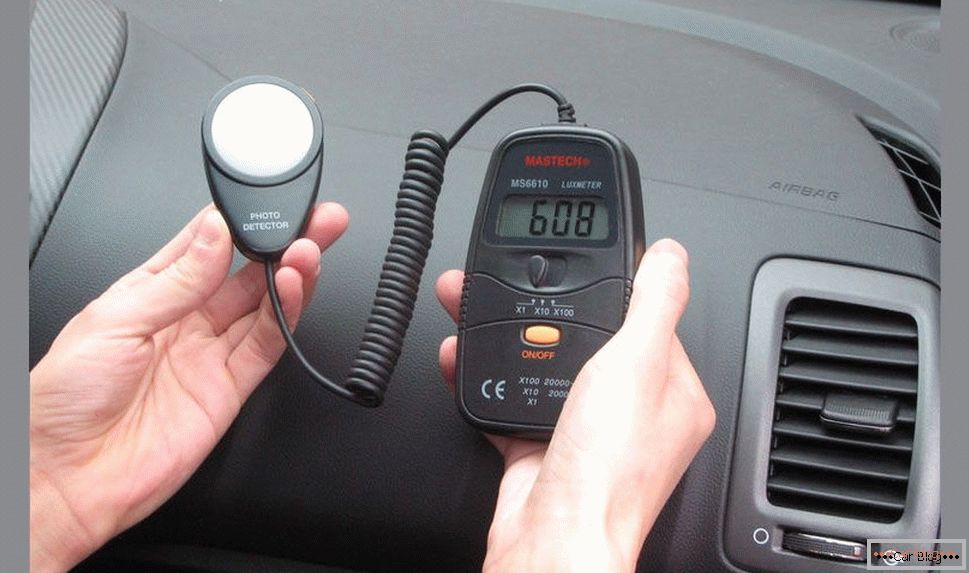
A light meter is used to test the defrosters.
The result of the tests under conditions ideally imitating the real situation was not only calculated using a luxmeter, but also summed up with the help of visual perception - how good is the visibility of one or another section of glass. A comparative point was made by the number of the car facing the test. As for the general data, contrary to skepticism, all anti-foggers have generally shown themselves to be positive. The data obtained from the device allowed us to determine the leaders with confidence:
- The smallest decrease in the level of illumination (about 8%) was provided by two anti-foggers at once. Both funds were imported - Sonax from Germany and CarPlan from England.
- Second place was shared between Sintec and ABRO - Russian and American compositions. Their rate was within 12%.
- Third place went to two Russian funds (VELV, Eltrans), which reduced the level of illumination by about 21%.
The test showed clear leaders, but for the sake of justice it is worth noting that the raw glass absorbed about 33% of the light, and this is in addition to a serious distortion of perception. This suggests that even relatively weak funds still have a good effect and cannot be discounted.
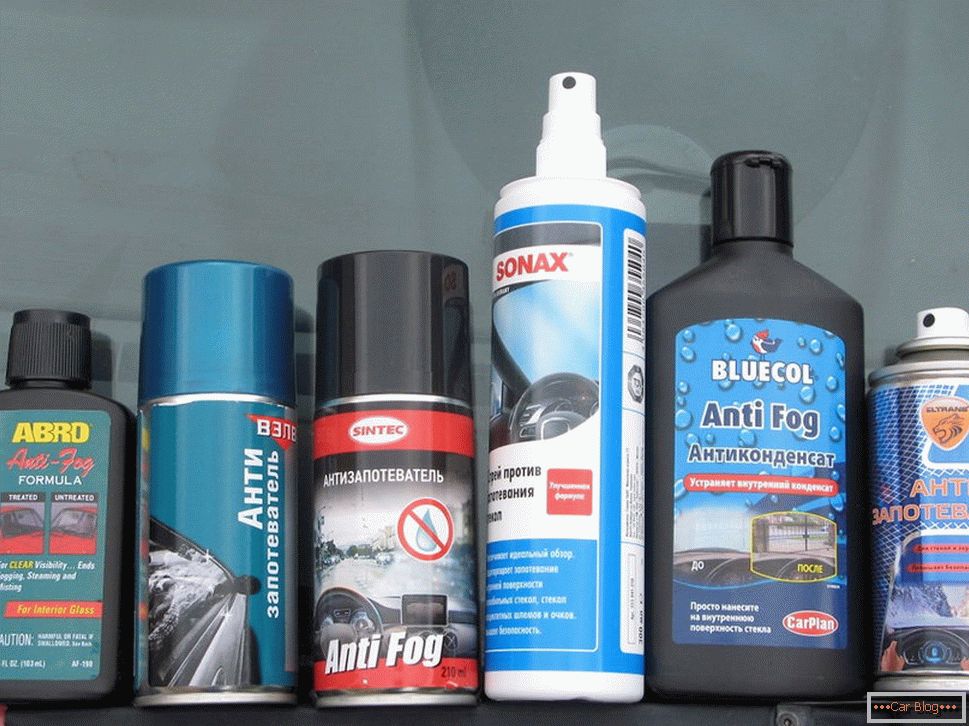
Top Defoggers
Detailed rating of defoggers for glass
Tweak
Opens the rating, taking the third place, which shares with Eltrans. The tool is made in Russia and has a cost of 120 rubles per bottle of 210 milliliters. Its level of reduction in illumination ranges from 19–23%. It is impossible to single out clear advantages or disadvantages - the antifogger did its job, albeit mediocrely compared with the test leaders.
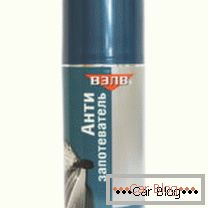
 Discounts for new cars! Profitable loan from 9.9% installments 0%
Discounts for new cars! Profitable loan from 9.9% installments 0%  adom.ru Glass defogger Tweak
adom.ru Glass defogger Tweak
Eltrans
Also produced in Russia. It has the same volume as VELV, but costs 110 rubles. The indicators for reducing the illumination level are the same - 19–23%. The disadvantages include the fact that it is a foam spray. This feature requires careful use, as thick foam can get onto the car dashboard.
Sintec
Second place. Russian means of 210 milliliters, which will cost 110 rubles. Unlike compatriots, it has almost twice the best result - it reduces the level of illumination by only 10–13%. A positive feature is the affordable price - the most rational in relation to quality. In addition, is the best tool in the domestic market of Russia. The disadvantage is that Sintec has the lowest shelf life and is stored for two years.
ABRO
Also located in second place in the test. This defogger is made in the USA and has the least optimal price among participants - 190 rubles per 100 milliliters. Like Sintec, the tool reduces the illumination level by 10–13%. The advantages of ABRO include a convenient dispenser in the cap - it is possible that ease of use pays for the cost, which, in turn, is a disadvantage.
Sonax
Divides first place with CarPlan. Sonax is made in Germany, which suggests the reason for its high quality. The tool reduces illumination by only 7–9%. In this case, the cost is 300 rubles per 300 milliliters. The advantage is that it copes well with the fog from a visual point of view - the part of glass processed by it distorts the perception least of all. In addition, the tool is stored for up to five years.
CarPlan
Also first place. Like Sonax, it reduces light levels by 7–9%. A flacon with a volume of 250 milliliters will cost 280 rubles - a bit more expensive than the main competitor. The tool also copes well with the fog from the point of view of the human eye. The disadvantage is the relatively high cost and the absence of a cut-off valve in the container - there is a risk of shedding the agent when opening.
Conclusion
The test allows you to find out which of the most common anti-foggers is better without acquiring them all - you can choose the best one Such is Sonax, which is insignificant, but superior to CarPlan. The cost of funds should not confuse drivers when choosing, because you can never save on their safety.

